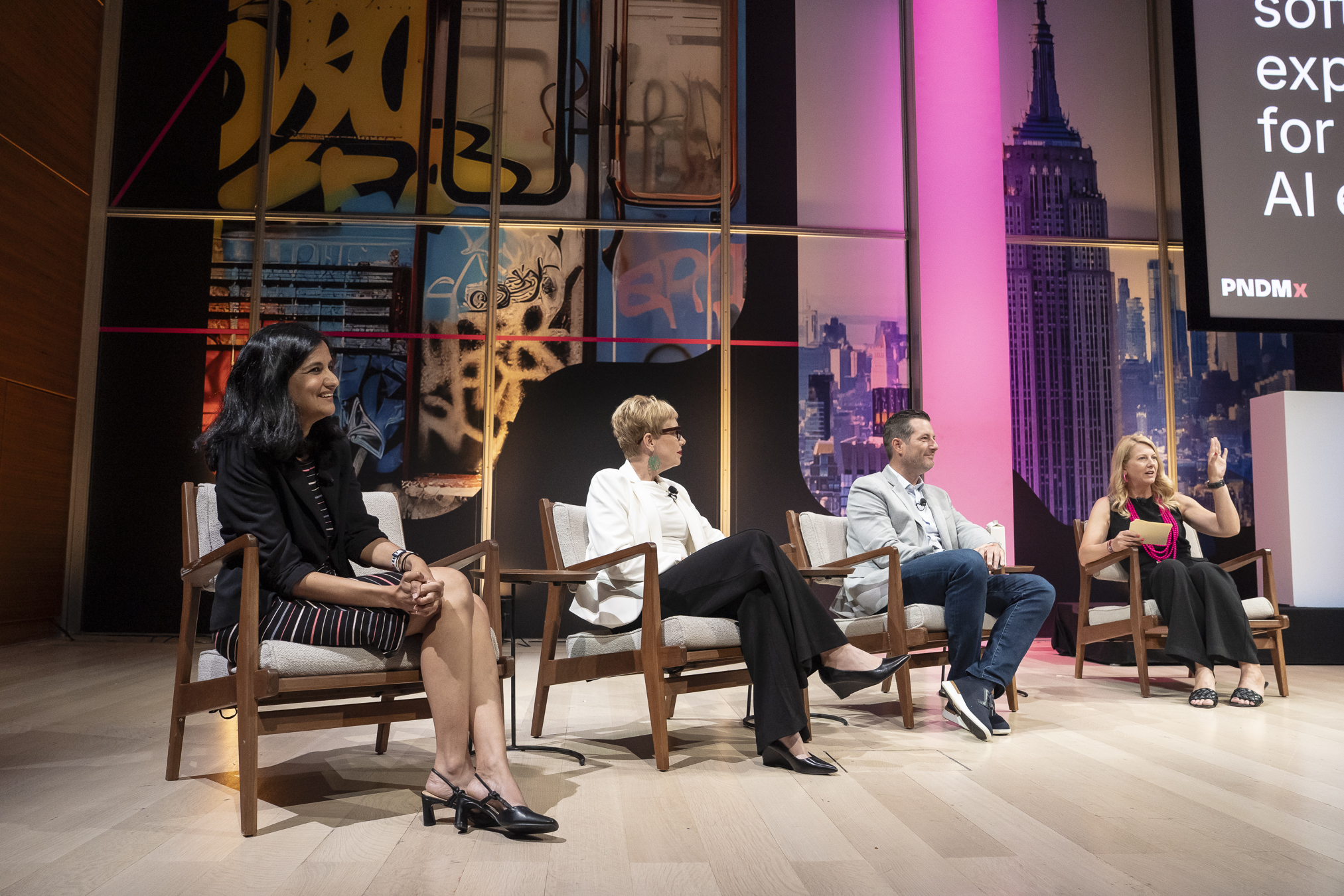Choosing the appropriate model is critical for a change management program to be successful. While many models exist, a one-size-fits-all approach rarely yields optimal results. Let’s examine a few widely used models and the situations where they are most appropriate.
Lewin’s Change Management Model
One of the most widely recognized models, Lewin’s Change Management Model is a three-stage model (unfreeze, change, refreeze) that emphasizes preparing users for change, managing the transition, and reinforcing the new way of working.
- Unfreeze: Prepare users for the change by explaining the “why” and addressing potential anxieties.
- Change: Facilitate the transition through user training and support mechanisms.
- Refreeze: Reinforce the new behavior and ensure the changes become the new normal.
It is most suitable when you need a structured and easy-to-understand approach for smaller-scale changes or introducing user-friendly technologies with clear benefits. For example, let’s say you are implementing a new social media scheduling tool for your marketing team. Lewin’s model provides a clear framework for familiarizing the team with the tool’s functionalities and integrating it seamlessly into their existing workflows. It is not a good choice when you expect large-scale cultural shifts or complex transformations that require a sustained change in behavior.
Pendo’s user onboarding capabilities can seamlessly integrate with Lewin’s model, allowing you to create step-by-step walkthroughs and contextual in-app guidance to support all three stages.
Kotter’s eight-step change model
Decades more recent than Lewin’s, Professor John Kotter at Harvard Business School introduced Kotter’s eight-step Change Model in his 1995 book Leading Change. It advocates a structured approach focused on creating a sense of urgency, building a guiding coalition, developing a vision, empowering action, and anchoring new behaviors for successful change implementation.
- Create a sense of urgency by highlighting the potential risks of inaction.
- Build a coalition of strong leaders to champion the change initiative.
- Form a vision of the future state and a concrete plan to achieve it.
- Communicate the vision and encourage widespread participation.
- Remove obstacles in organizational structure, leadership, and detractors.
- Celebrate short-term wins to reinforce new behaviors and drive change forward.
- Build more change by using one success to drive even more improvement.
- Institutionalize change into the culture by modifying systems, structures, and policies to support the new way of working.
This model is appropriate for a large-scale transformation that requires a solid guiding coalition and a compelling vision for change. For example, a multinational corporation needs to implement a new ERP system that will fundamentally change the operation of multiple departments. Kotter’s model helps build a strong leadership team and a clear vision to ensure everyone understands the “why” behind the change and how it benefits the whole organization. However, it is not a good choice if time and resources are limited, as it is more comprehensive and requires a significant investment of time and effort.
While Kotter focuses on building a solid leadership team, Pendo’s user feedback features can build consensus from the bottom up. It empowers users to provide valuable insights throughout the change process, as well as fostering communication and a sense of ownership.
Procsi’s ADKAR Model
Prosci developed the ADKAR model in the early 2000s. It focuses primarily on individual user adoption and ensuring all employees have the resources and motivation to embrace the change. ADKAR is an acronym that stands for:
- Awareness: Users understand the need for the change.
- Desire: Users see the benefits and want to learn the new system.
- Knowledge: Users have the skills and knowledge to use the new system effectively.
- Ability: Users can confidently perform tasks within the new system.
- Reinforcement: Users continue using the new system and integrate it into their workflows.
This model excels when the success of the change hinges on each individual’s understanding of how they (and the organization) will benefit and their ability to use the new system(s) effectively. For example, a customer service team is transitioning to a brand-new ticketing system. The ADKAR model ensures each representative knows the system’s benefits, receives adequate training, and feels comfortable navigating the new platform. However, due to its focus on individual users, it is not ideal when large-scale organizational shifts are necessary beyond individual user adoption.
Pendo can facilitate this model in multiple ways. For example, its all-in-one platform provides fast onboarding, in-app guides, and communications to ensure each individual knows what is happening and when, how the change will affect them, and how to use and benefit from the changes. Also, Pendo’s comprehensive analytics can identify areas where users might lack knowledge or ability, allowing for targeted interventions and resources to bridge these gaps.
Beyond the “big three” for a change management model
While the three core models we’ve explored provide a strong foundation, several other popular models cater to specific change management needs.
The Nudge Theory focuses on influencing user behavior through subtle cues and suggestions, such as strategically placing tooltips or progress bars within a new interface. This model is particularly good at encouraging initial exploration of a new system but might not be suitable for driving sustained behavioral.
The Prosci Change Management Methodology, unlike Prosci’s ADKAR model, is organizationally focused. It is a detailed, phase-gated approach that is ideal for complex transformations with a high degree of risk or uncertainty. Because it is resource-intensive, it is less suitable for smaller-scale changes.
The Bridges Transition Model focuses on the emotional journey individuals experience during change, acknowledging the various phases of transition (ending, losing, the neutral zone, beginning, and the new ending). While is can address employee anxieties and change resistance, it doesn’t provide a specific implementation roadmap.It might be best combined with another model.
Which change management model and tools are the right fit for you?
When selecting a change management model, remember to consider the following factors:
- Complexity of the change: A simpler model like Lewin’s might suffice for smaller-scale changes or user-friendly technologies. Complex transformations may require a more comprehensive approach like Prosci.
- Time and resources: Some models, like Kotter’s eight-step model, require significant time and resources. Evaluate your available resources before choosing a model.
- Target audience: The Bridges Transition Model can be particularly helpful when managing individual emotional responses to change. The ADKAR model is well-suited for ensuring user adoption at the individual level.
By understanding the strengths and limitations of each model, you can select the one that best aligns with your specific digital transformation initiative and empowers a smooth transition for your users.
Regardless of which change management model you select, one of the primary goals of any digital transformation project must be user acceptance and adoption. Pendo can empower you to reach that goal with:
- Streamlined user onboarding: Reduce initial learning curves and ensure user comfort from Day One with Pendo’s intuitive onboarding functionalities.
- Contextual in-app guidance: Offer ongoing support and minimize reliance on bulky training manuals with Pendo’s targeted in-app guidance features.
- Empowering user feedback: Foster a sense of ownership and gather valuable insights with Pendo’s user feedback mechanisms.
- Actionable analytics and reporting: Gain deeper user behavior insights through Pendo’s comprehensive dashboard, allowing you to identify areas for improvement and tailor communication or training efforts accordingly.
By seamlessly integrating with your chosen change management model and addressing the user experience throughout the transition, Pendo can significantly increase the success rate of your digital transformation initiative.
Make sure you get change management right from the outset
Ultimately, it is up to each organization to choose the change management model that fits its situation and the right digital adoption solution (like Pendo) to facilitate the model’s success. If you want to explore more on what is change management check our guide out. By prioritizing user experience and implementing structured change management tactics, you can ensure a smooth transition for your staff and maximize the positive impact of your digital transformation on your business outcomes.
Want to learn more about how Pendo’s data driven digital adoption platform enables effective change management to ensure digital transformation initiatives succeed? Get a custom demo here.


